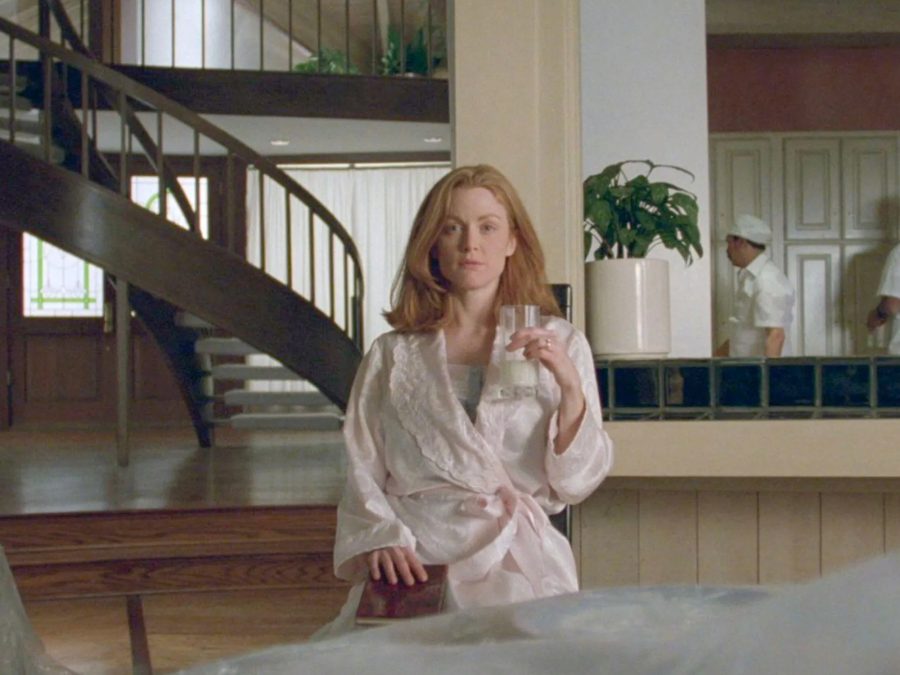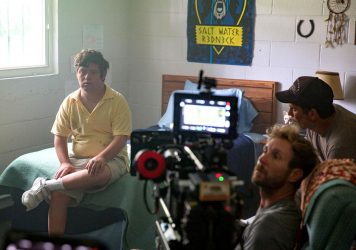
The history of disability representation in cinema is a long and difficult one, rife with falsehoods, insulting portrayals and misinformation. Despite people with disabilities having always possessed the same creativity and talent as everyone else, their representation behind and in front of the camera has traditionally been minimal. Films featuring disabled characters are few and far between, and when they do exist, it’s usually exclusively with the involvement of non-disabled filmmakers and actors. Slowly but surely, things are beginning to change, with films including The Peanut Butter Falcon, CODA and Crip Camp among recent titles improving the way disability is represented on screen. But must-needed change can’t come soon enough.
Now comes the Crip Cinema Archive, founded by Emily Simmons, which aims to provide a resource for film fans and professionals alike that champions the stories and talent of people with disabilities both behind and in front of the camera. LWLies spoke to Emily to find out what inspired the project, and how she hopes the Crip Cinema Archive can be a part of moving disabled representation in the cinema forward.
LWLies: What was the impetus behind starting the Crip Cinema Archive?
Emily Simmons: There are so many feelings and moments and conversations that have led to the creation of the archive. I’ve been fixated with crip cinema for a long time – it’s hard to pinpoint when this started, but it recently rekindled following discussions with a friend in the industry about the ‘lack’ of it. Aching to see ourselves honestly represented on that big screen we love so dearly, but are time and time again excluded from.
Through my research, what once seemed an uninhabited genre – near-invisible in contemporary cinematic discourse – started appearing to me rich, complex, and abundant.
Crip Cinema Archive celebrates this history of disabled cinema. It’s a cinema of resistance. It feels important to collect and value these films. Films that inform the world on who we are as disabled people, what we have to contribute, and what we have contributed to a medium as powerful as the moving image.
I’m conscious of the harm that negative representations of our community on screen have caused, and continue to cause each Oscar season, and hope the archive can offer a different lens through which to view crip cinematic history. That it doesn’t flatten or avoid the complexity, but instead records its abundance and brings it out of the shadows. The impact each film has on disabled people outside the confines of the cinema remains at the forefront of my mind.
The term ‘crip’ has quite a difficult history for people with disabilities – how did you decide upon the name?
The term ‘crip’ comes from ‘cripple’, and it’s a reclaimed term by disabled people. (You’ll notice I use the words crip and disabled interchangeably – I love both and think it’s important to use disabled too.) For me, crip is a term that displays pride in my identity as a disabled person, and also implies a certain political positioning and resistance within it as well. Crip theory emphasises the intersection of disability with experiences like sexuality, race, class, and gender. It feels like a word that loudly expresses love and acceptance for a really big, varied range of people and experiences.
In some ways, it’s a hard thing for me to put into words. It’s arguably the question I receive most from non-disabled people I speak with about the project. ‘What does crip mean?’ ‘Am I allowed to say it?’ I considered adding an explainer to the site, but two things stopped me. First, is that I don’t really feel like I’m the person to define crip. It’s changing all the time. Second, is that I kept coming back to the idea that this project is, first and foremost, for our community. Crips know what I mean!
I think we have to live as we want things to be now, rather than hope for future conditions that may or may not someday arise (of course, easier said than done). It took a long time for me to reach this level of love and acceptance for being disabled that I now have, and it’s always a work in progress. Using crip feels like a marker of all that ongoing work. It’s defiant.

Do you have any personal favourite films when it comes to disability representation – ie. films you think handle the subject really well?
So many! Safe directed by Todd Haynes is probably the film that most directly led to the creation of Crip Cinema Archive. I was in awe the first time I saw it. The way it captures the experience of illness under capitalism – the isolation, the gaslighting, the ableist ideology behind a lot of ‘treatment’. It’s also just got so many fun, ridiculous moments and looks beautiful. Everyone should see this film.
Sick, Blue Sea is another favourite. I sob every time I watch it. It explores nausea and environmental concerns through a Tumblr blog narrated by a sick teenage sperm whale. Lizzy Rose is one of the first artists I came across with the same illness as me, and this film captures the experience of chronic nausea so precisely in such a silly, humorous way while retaining all of the depth and darkness – it means a lot to me. All of her work does. I’m really honoured her family and friends allowed me to include her work in the archive.
More recently I’ve been thinking a lot about The Girl Who Sold The Sun. It has a very important crip dance scene. Joyous. Crip Camp and Blue feel like crip cinema canon. They’re so rich in substance, so entirely crip, and so well executed. The history of crip cinema would surely be incomplete without mentioning these.
What are your goals for what the archive might become?
I have three goals for the archive: to create a resource for disabled filmmakers and film lovers seeking out crip cinema; to be a launching pad for further discussions about how to define crip cinema; what it is, what it isn’t, and what it could be; and to imagine better crip film futures – in front of and behind the lens – and make them a reality.
In the short term, I’m excited to start curating some events and hosting panels. I just want to have lots of conversations with a wide range of people and see where we get to. I’ll also be adding more films to the archive, and seeking to improve the accessibility of the site.
Long term, I see the need for it to become a physical archival collection. (If anyone would like to fund that, please do get in touch haha.) Some of the greatest crip cinema out there is still really hard to access. I want it to be more accessible. In a dream world, the website would actually host all of the films – available for all crips to watch from their beds whenever they like.
This is an unfunded project and I am chronically ill and neurodivergent. I’m trying to not just talk about crip theory/films but to actually embody crip ways of working. The project is moving on crip time and this is a big part of it. In my emails with the filmmakers I made sure to let them know there is no rush to respond – and I give myself that reminder too. It feels really good and scary to do this.
Are there any first steps that film professionals and fans can take to be more mindful of disability in their film watching and film going?
A great question! I think it often comes back to ‘Nothing About Us Without Us’. A slogan emphasising the importance of disabled people’s involvement in anything about disabled people. When you’re seeing a disabled person on screen, or watching a story about disability, ask yourself who was involved in the creation of the film? Whose humanity is being acknowledged/respected and whose isn’t? Are disabled people in on the joke, or the object of one? A number of Best Actor/Actress Oscar winners in the last 15 years have been given to able-bodied actors playing disabled roles, and yet disabled people are not even close to equally represented in the film industry. It’s a strange disconnect.
In terms of film professionals, there’s a lot of work to do. There’s more to it than access, but the standard for access across filmmaking and exhibition is still so low that it is a big barrier. Why do cinemas and galleries not include open captions for every film screening? We don’t consider this access for foreign language films. Captions benefit so many people and are very cheap to produce. Access needs to be integrated into every screening, not a siloed part of a cinema or festival’s programming. Disabled people are 23% of the population. We aren’t a niche audience and we shouldn’t be segregated.
How can people support the project going forward?
It really means a lot to me when people watch the films and really engage with the work! Have conversations with your friends and colleagues about crip cinema and what it means to you. Apart from that – follow us on Instagram, subscribe to the Subtack, keep an eye out for upcoming events and please come along! I also may launch a Patreon or some kind of crowdfunder soon if there’s enough of an appetite for it.
Find out more about The Crip Cinema Archive.
Published 23 Apr 2024

By Leigh Singer
The film’s directors and star Zack Gottsagen, who has Down syndrome, discuss overcoming industry stigma.

Oska Bright Film Festival is offering a bold, inspiring vision for how disability can be represented on and off the screen.

The director of CODA discusses working with the Deaf community for her tender coming-of-age drama.